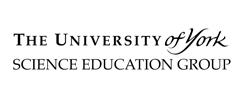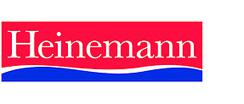- View more resources from this publisher
 University of York Science Education Group (UYSEG)
University of York Science Education Group (UYSEG)
Off the Blocks
In this Salters’ Science biology extension module, sporting contexts are used as a basis for study of various systems within the body. The module also considers how diet, exercise and life-style can contribute towards fitness and good health.
The relationship between different sporting activities and body shape is illustrated. Study of the skeleton leads to discussion of the structure of bones, and the function of different types of joints. Models are made to illustrate how muscles work in opposed pairs.
Skeletal muscle, smooth muscle and cardiac muscle are compared. Respiration in cells is compared to the function of power-stations in a community. Aerobic and anaerobic respiration are considered and related to “oxygen debt”.
The role of red blood cells in transporting oxygen leads to ideas about blood ‘matching’ before transfusions are given. Text and practical activities explain the mechanisms of breathing. Major processes in digestion are discussed and the blood system is compared to a road or rail transport system, with measurements on arteries, veins and capillaries.
Text exercises show the structure of the heart. Finally, the problems associated with use of banned substances by athletes are considered.
Lesson 1: Fit for what?
The relationship between body shape and different sporting events is considered.
Lesson 2: Join here!
The structure of bones is modelled and different types of joint are classified.
Lesson 3: Muscle in on Movement
Models are used to study the structure and function of muscles.
Lesson 4: Energising cells
Cellular respiration is compared to the energy conversion processes in a power-station.
Lesson 5: Delivery service
Students model the structure of red blood cells and play a card game to simulate matching of blood types.
Lesson 6: Free as air?
The need to time breathing when swimming introduces a study of the lungs and the mechanisms of breathing.
Lesson 7: Filling up and burning off
Students revise the main processes of digestion and consider how the body draws on energy reserves during exercise.
Lesson 8: Blood on the move
The organisation of the blood stream is compared to that of road or rail transport networks.
Lesson 9: Improving the beat
Dissection of a sheep’s heart illustrates the structure and function of the heart.
Lesson 10: Innocent or guilty?
A role-play of an athlete’s hearing is used to raise issues of the dangers of drug abuse to enhance sporting performance.
Show health and safety information
Please be aware that resources have been published on the website in the form that they were originally supplied. This means that procedures reflect general practice and standards applicable at the time resources were produced and cannot be assumed to be acceptable today. Website users are fully responsible for ensuring that any activity, including practical work, which they carry out is in accordance with current regulations related to health and safety and that an appropriate risk assessment has been carried out.
Downloads
-
Off the blocks 7.5 MB





